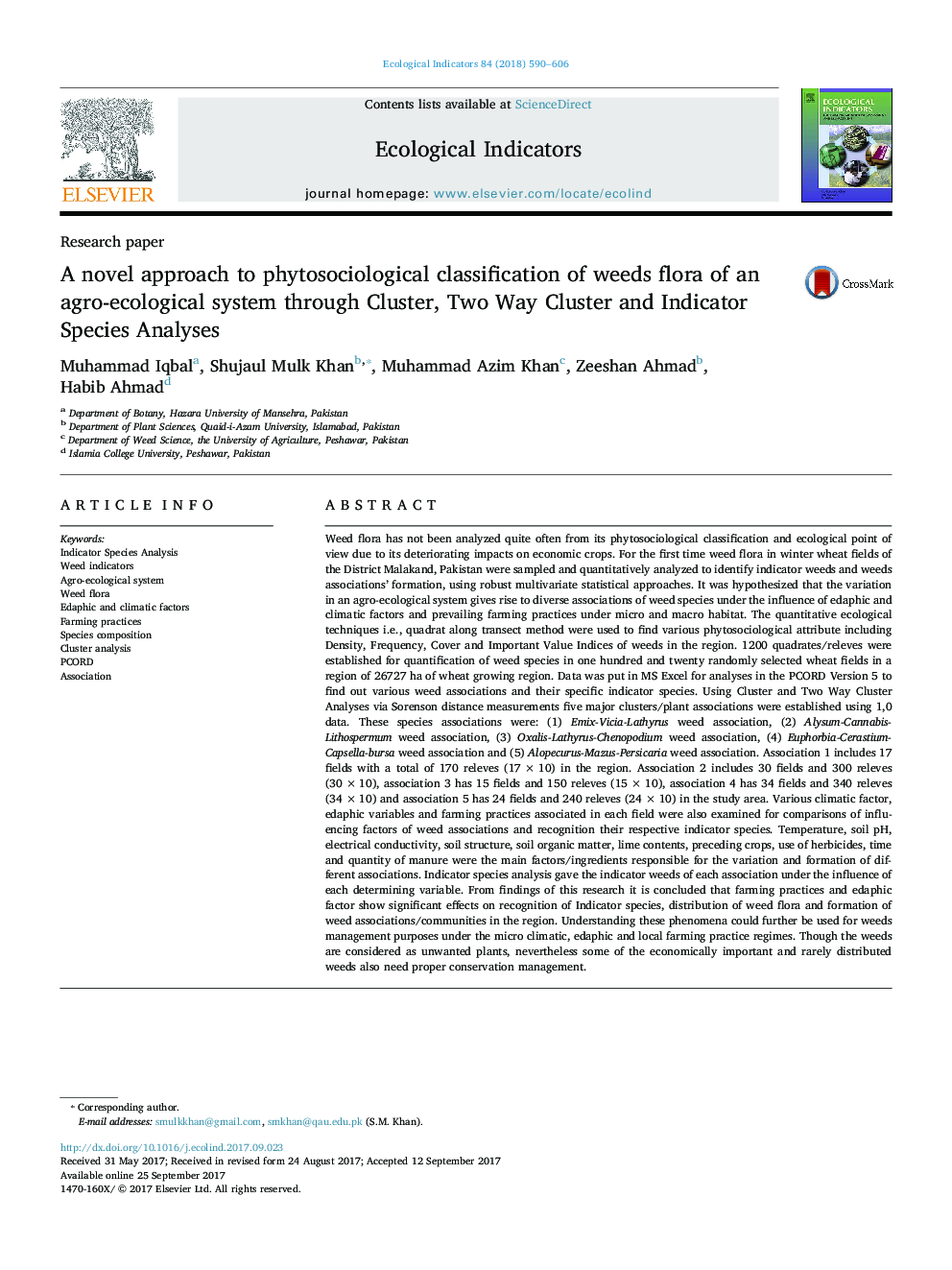| کد مقاله | کد نشریه | سال انتشار | مقاله انگلیسی | نسخه تمام متن |
|---|---|---|---|---|
| 5741583 | 1617118 | 2018 | 17 صفحه PDF | دانلود رایگان |
- Weeds species are integral part of ecosystem and must be managed sustainably.
- For sustainable management of weed, phytosociological classification into weed associations/communities types is a prerequisite.
- Abiotic factors and farming practices have a significant role in variation of weed species composition, formation of weed association associations and most importantly development of weed indicators.
- Identified weed indicators could further be utilized in weeds management and conservation.
Weed flora has not been analyzed quite often from its phytosociological classification and ecological point of view due to its deteriorating impacts on economic crops. For the first time weed flora in winter wheat fields of the District Malakand, Pakistan were sampled and quantitatively analyzed to identify indicator weeds and weeds associations' formation, using robust multivariate statistical approaches. It was hypothesized that the variation in an agro-ecological system gives rise to diverse associations of weed species under the influence of edaphic and climatic factors and prevailing farming practices under micro and macro habitat. The quantitative ecological techniques i.e., quadrat along transect method were used to find various phytosociological attribute including Density, Frequency, Cover and Important Value Indices of weeds in the region. 1200 quadrates/releves were established for quantification of weed species in one hundred and twenty randomly selected wheat fields in a region of 26727Â ha of wheat growing region. Data was put in MS Excel for analyses in the PCORD Version 5 to find out various weed associations and their specific indicator species. Using Cluster and Two Way Cluster Analyses via Sorenson distance measurements five major clusters/plant associations were established using 1,0 data. These species associations were: (1) Emix-Vicia-Lathyrus weed association, (2) Alysum-Cannabis-Lithospermum weed association, (3) Oxalis-Lathyrus-Chenopodium weed association, (4) Euphorbia-Cerastium-Capsella-bursa weed association and (5) Alopecurus-Mazus-Persicaria weed association. Association 1 includes 17 fields with a total of 170 releves (17Â ÃÂ 10) in the region. Association 2 includes 30 fields and 300 releves (30Â ÃÂ 10), association 3 has 15 fields and 150 releves (15Â ÃÂ 10), association 4 has 34 fields and 340 releves (34Â ÃÂ 10) and association 5 has 24 fields and 240 releves (24Â ÃÂ 10) in the study area. Various climatic factor, edaphic variables and farming practices associated in each field were also examined for comparisons of influencing factors of weed associations and recognition their respective indicator species. Temperature, soil pH, electrical conductivity, soil structure, soil organic matter, lime contents, preceding crops, use of herbicides, time and quantity of manure were the main factors/ingredients responsible for the variation and formation of different associations. Indicator species analysis gave the indicator weeds of each association under the influence of each determining variable. From findings of this research it is concluded that farming practices and edaphic factor show significant effects on recognition of Indicator species, distribution of weed flora and formation of weed associations/communities in the region. Understanding these phenomena could further be used for weeds management purposes under the micro climatic, edaphic and local farming practice regimes. Though the weeds are considered as unwanted plants, nevertheless some of the economically important and rarely distributed weeds also need proper conservation management.
Journal: Ecological Indicators - Volume 84, January 2018, Pages 590-606
